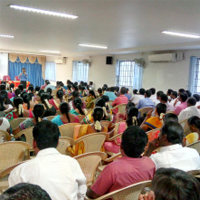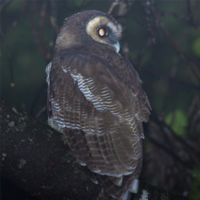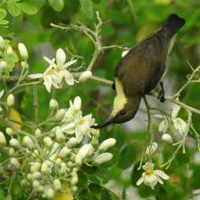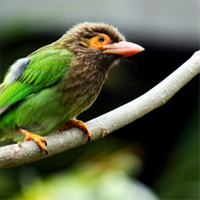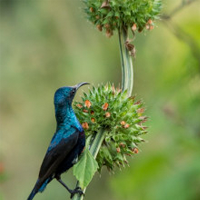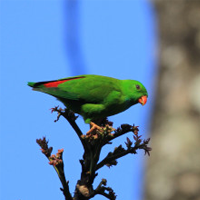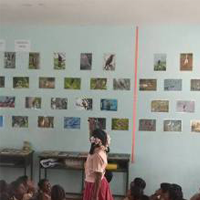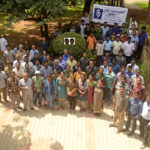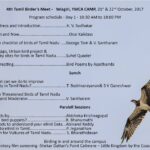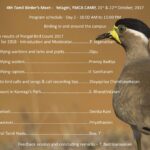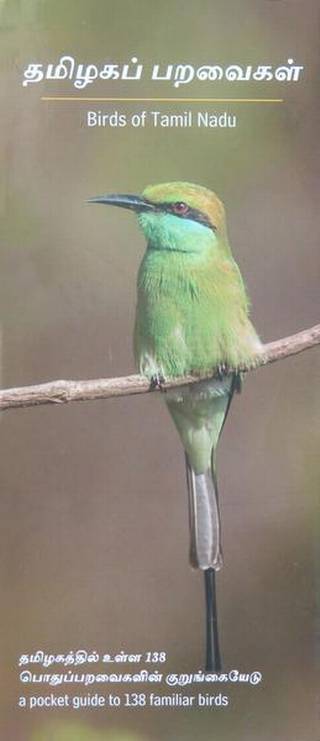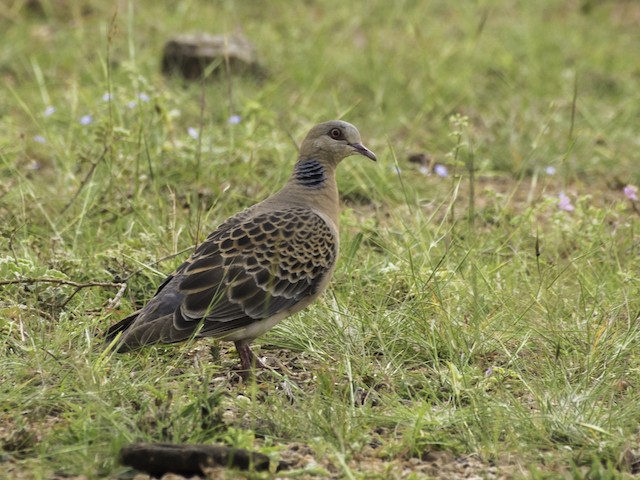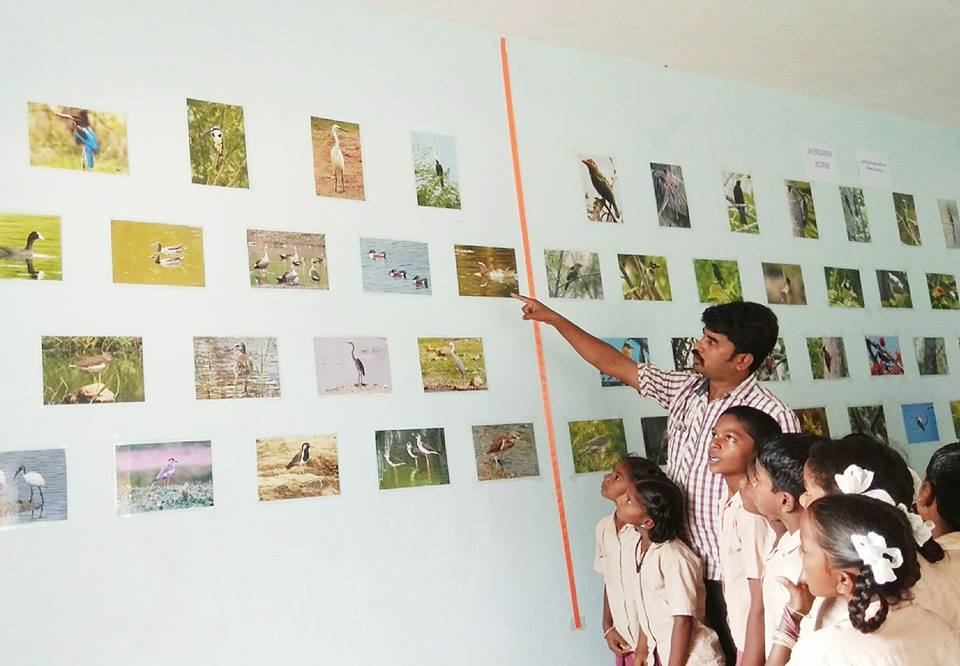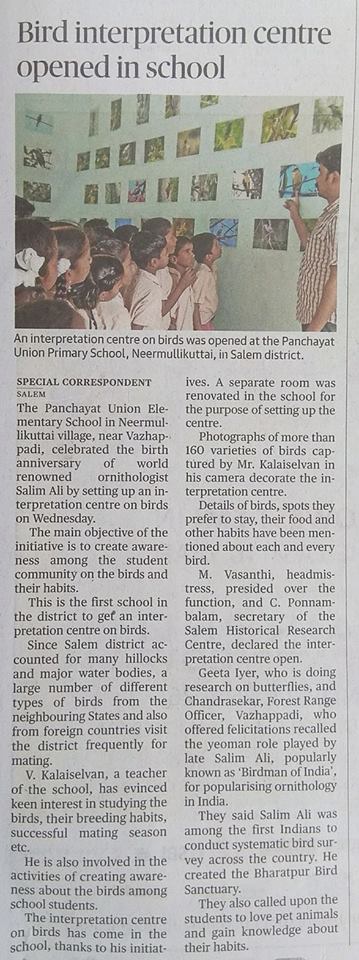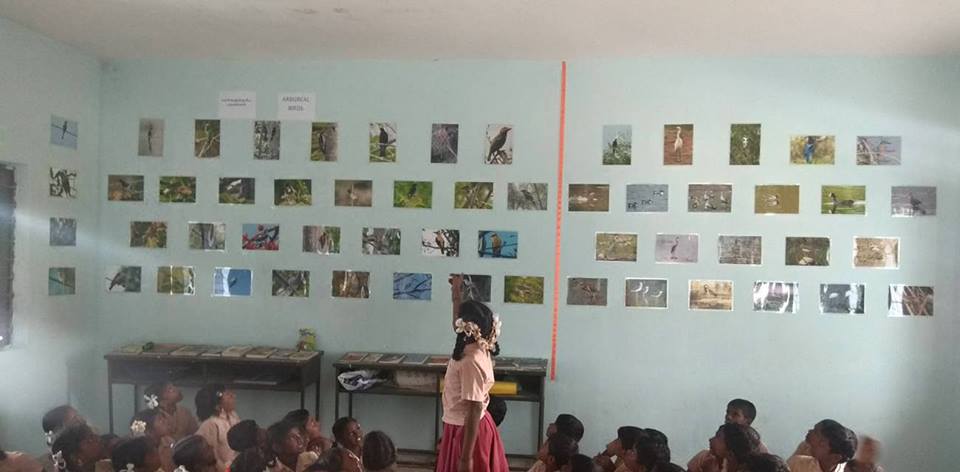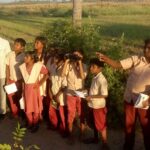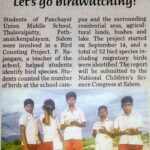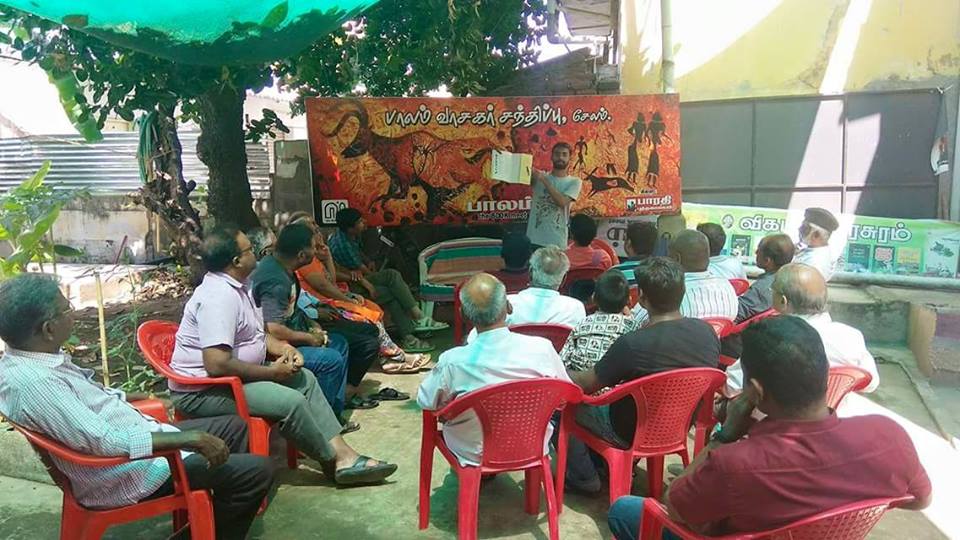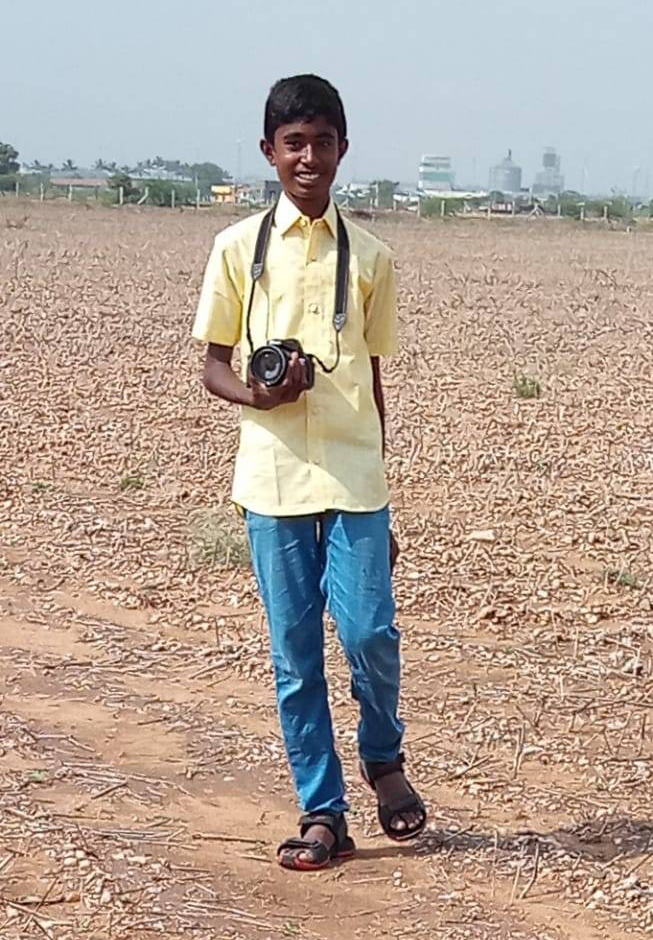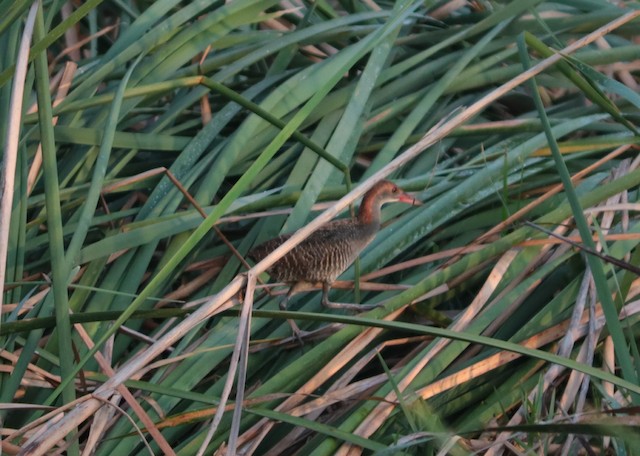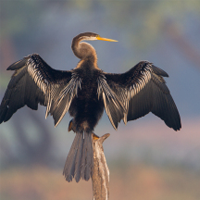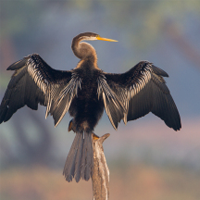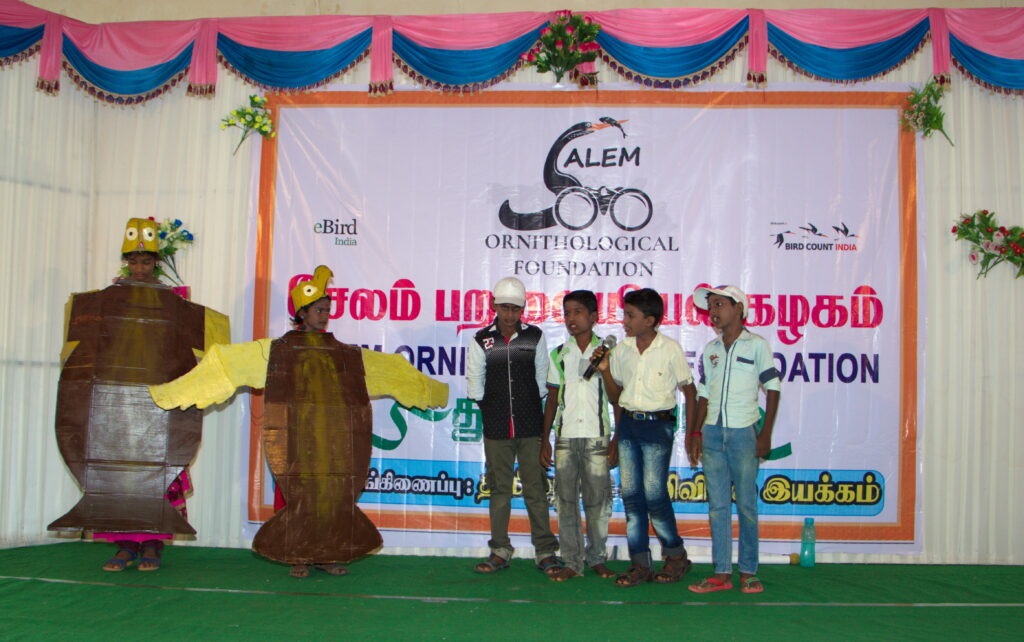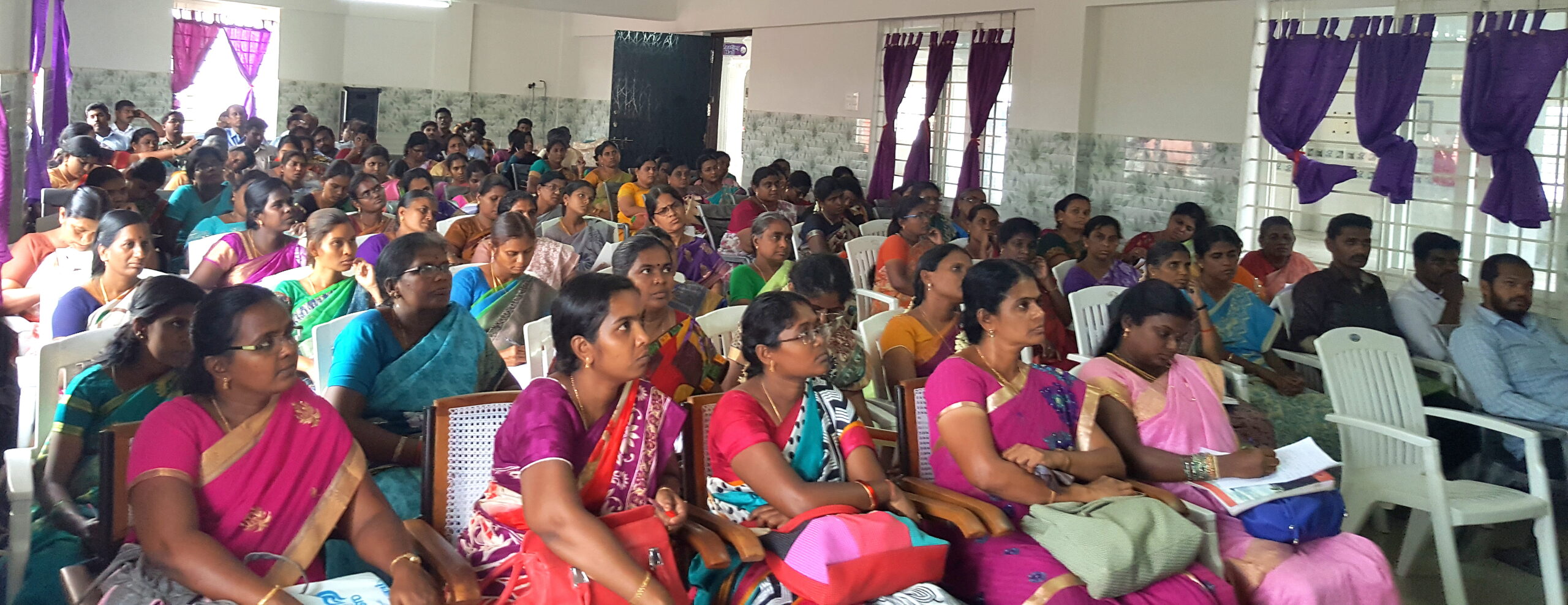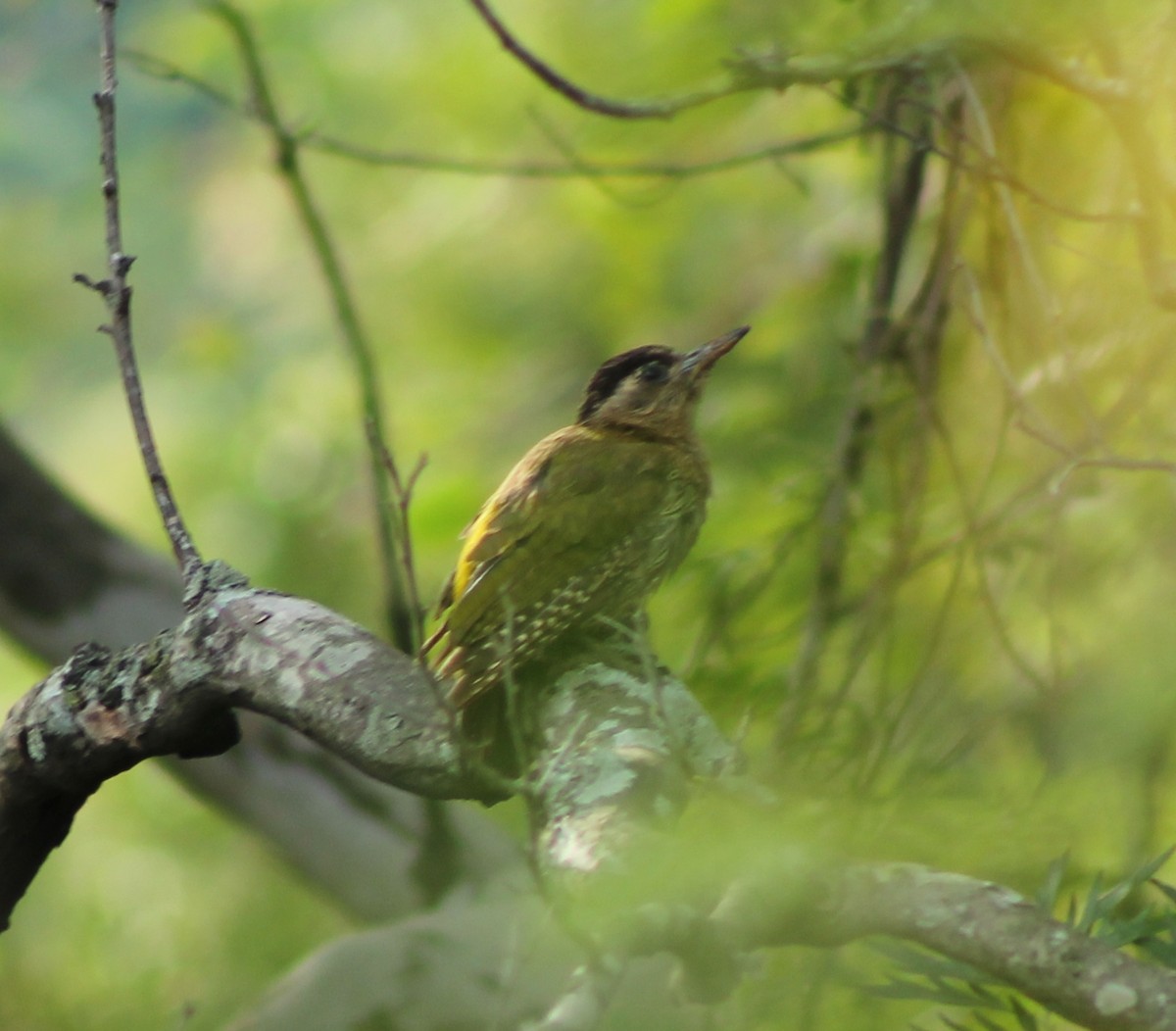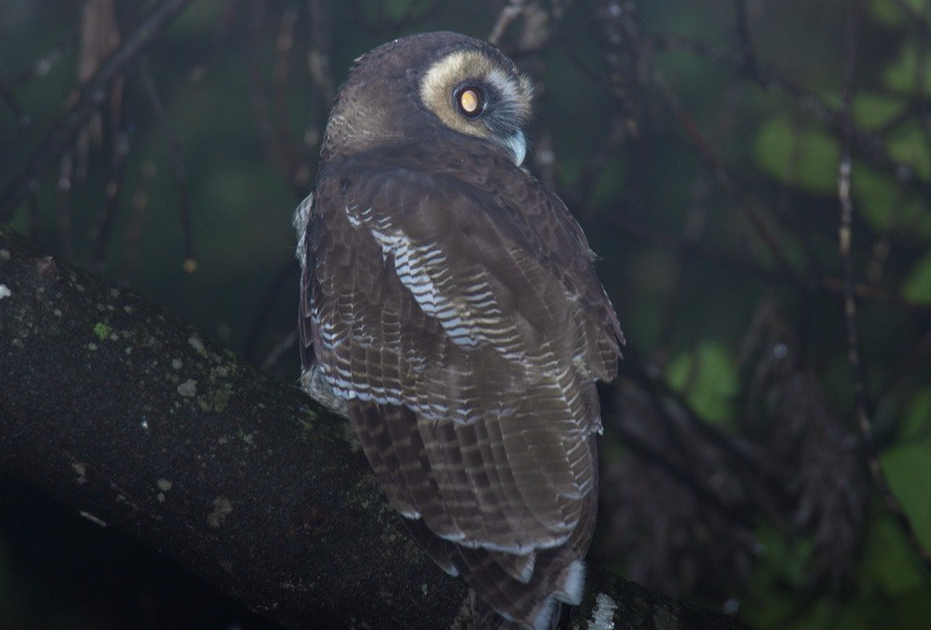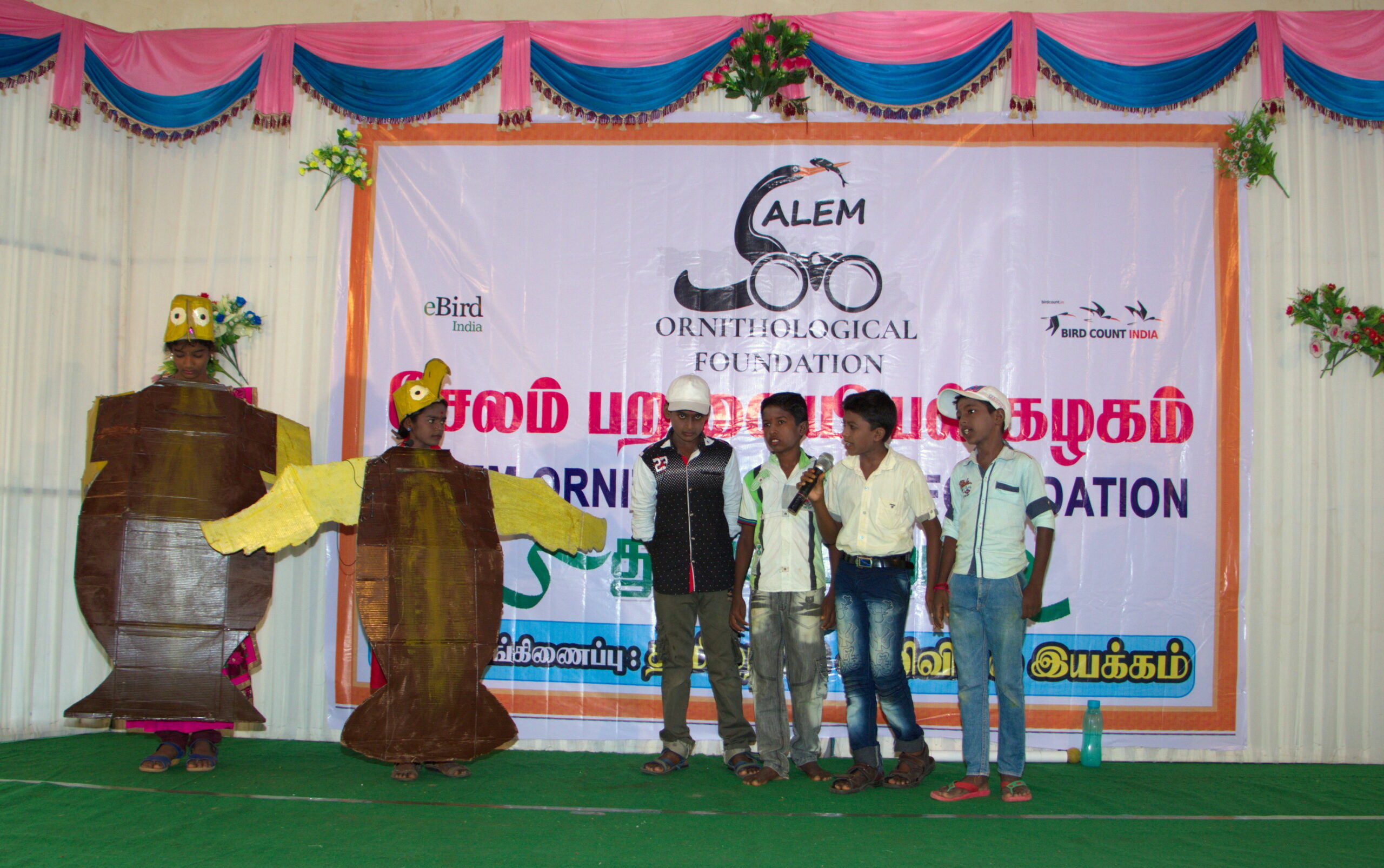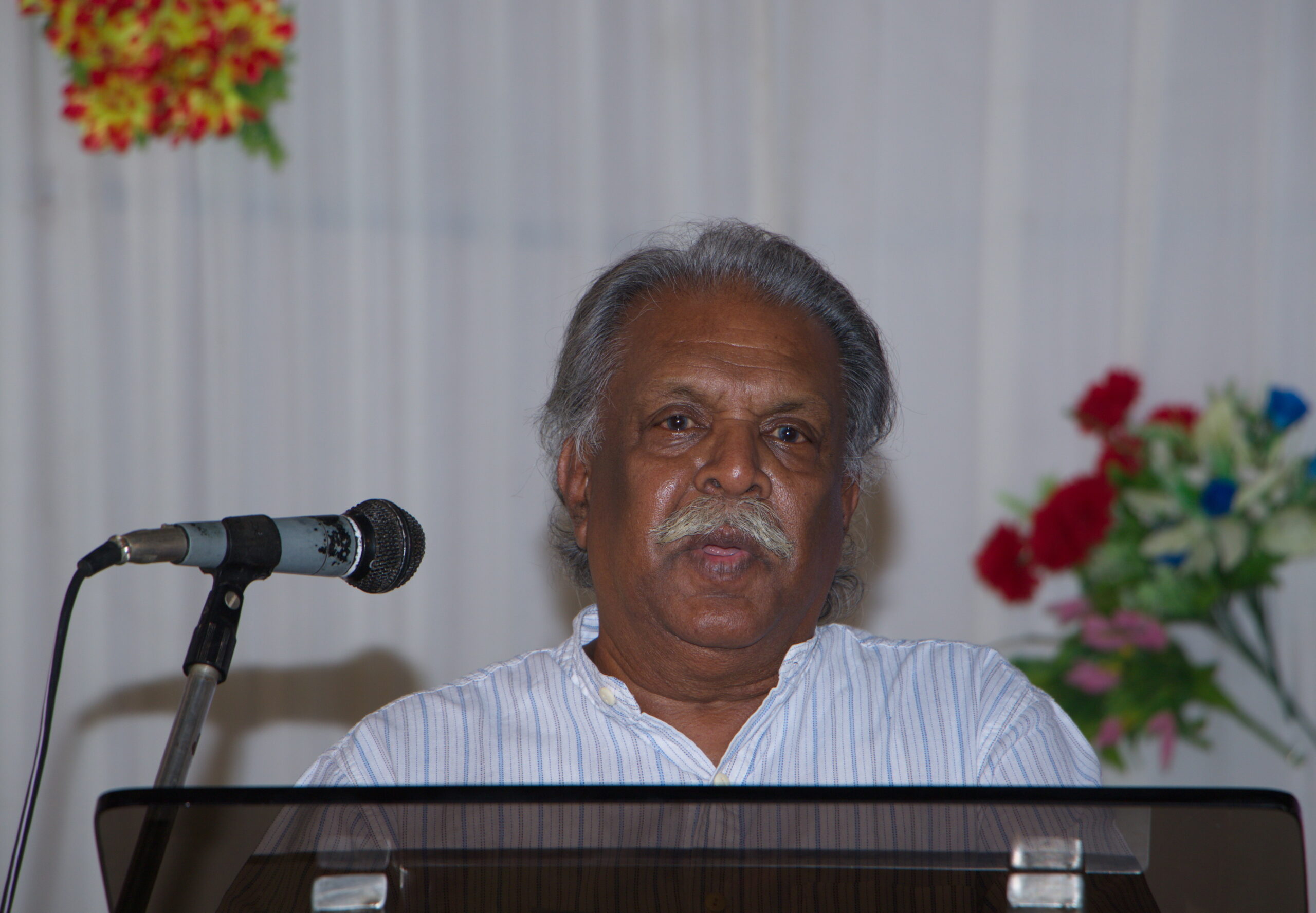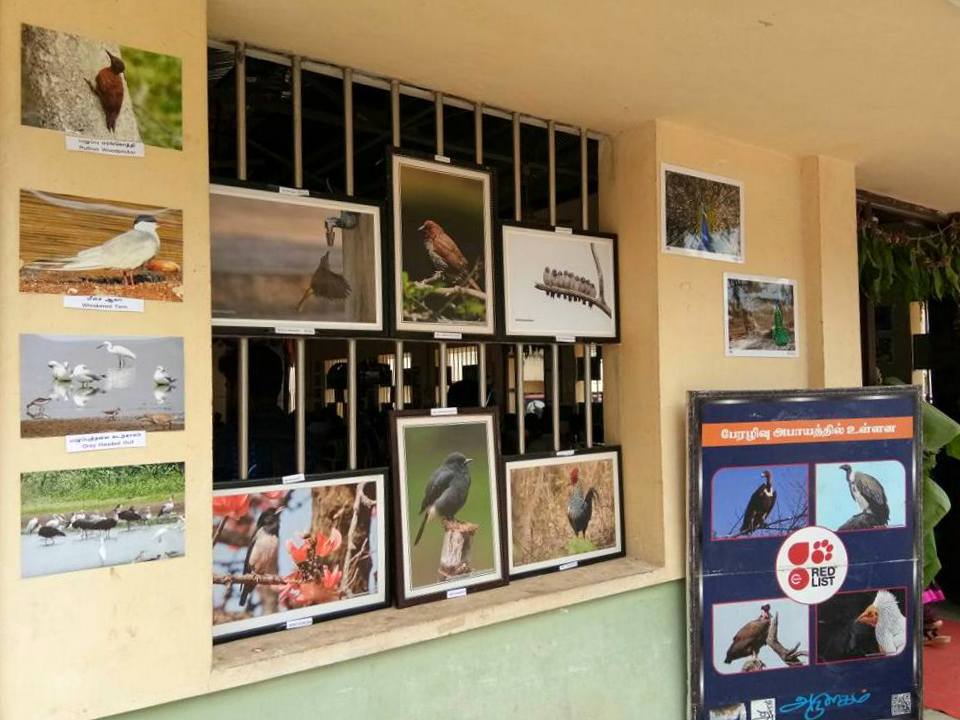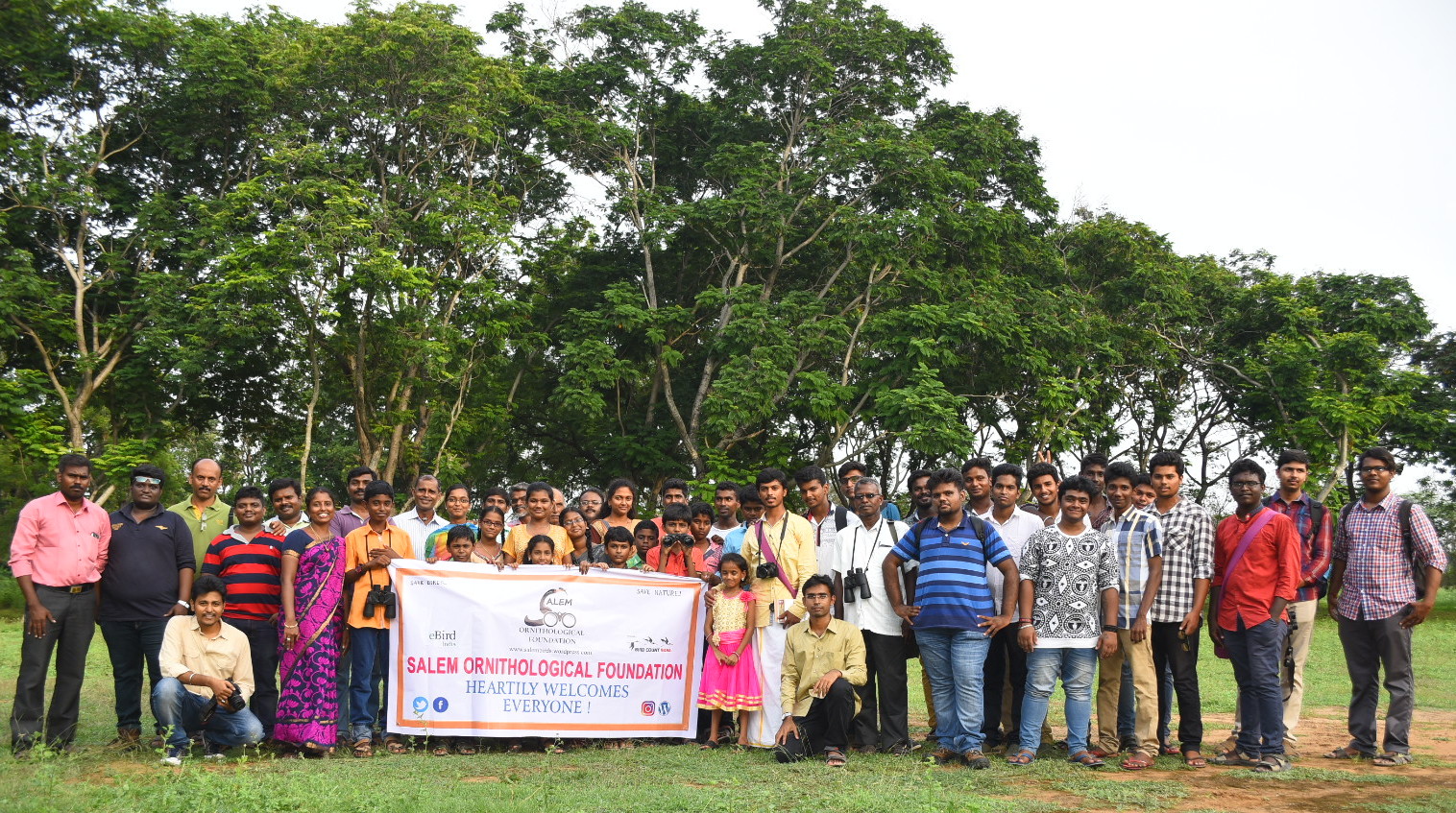Statewide Bird Education Programs conducted in Tamil Nadu—2017
Ganeshwar SV
Recently, I was digging into my old files and to my surprise I found the detailed report of the Statewide Bird Education Programs that I organized in 2017 under the Sarva Shiksha Abhiyan (SSA). These training workshops were conducted for teachers by the Department of School Education, Government of Tamil Nadu; we were given a slot to present the importance of birds in the ecosystem and the need to take birding to children.
SARVA SHIKSHA ABHIYAN – EDUCATION FOR ALL MOVEMENT
Sarva Shiksha Abhiyan (SSA) – Education for All Movement is an Indian Government programme aimed at the universalisation of elementary education. SSA has become a huge success in providing quality basic education to the children in Tamil Nadu due to the consistent and tremendous efforts being taken by the Department of School Education, Govt. of Tamil Nadu.
STATE-LEVEL WORKSHOPS
I got an opportunity to give a presentation in the State-level SSA Training Workshop held at Chennai. After my interaction with the teachers, the wonder and services of birds had impressed them! Soon after my session was over, Tmt. K. Sridevi, Joint Director, SSA took me immediately to the Secretariat to meet the then Secretary for School Education, Thiru. T. Udhayachandran I.A.S.
|
STATE-LEVEL SSA WORKSHOP 2017 |
|||
|
S.No. |
Location | Bird Educator |
No. of Teachers Participated |
| 1 | Chennai | Ganeshwar SV |
120 |

MEETING WITH THE SECRETARY OF SCHOOL EDUCATION
We waited for a while and were called in. I was a bit nervous but he made sure that I was comfortable during the discussion. He is simple, soft spoken with a determined voice, a voracious reader and a man of great knowledge. Thiru. T. Udhayachandran I.A.S. was just straight to the point and was ready to support this outreach program about birds. Interestingly, he too had a set of ideas related to birds and environment which he wanted to implement in schools. He also said that environmental organizations in Tamil Nadu must have the readiness to work together when there is a need to achieve bigger goals. The only question he asked was if we had the capacity (number of resource persons) to reach all the districts to conduct awareness programs for teachers. He was also clear about having resource persons who can do well with awareness sessions so that our best of intentions could be fulfilled. I didn’t have any direct answer but keeping in mind the resources of Tamil Nadu Science Forum spread across all districts, I agreed that we could do it. Then he told me that similar workshops would be conducted for teachers at the district level and then at block levels and insisted me to coordinate bird educators across Tamil Nadu and all necessary support would be provided. After that I got the opportunity to meet him few more times for other key discussions about birds. He is also the man who brought several educational reforms in Tamil Nadu during his tenure as the Secretary of School Education.

DISTRICT-LEVEL WORKSHOPS
I started to contact as many birders as possible across Tamil Nadu. They readily agreed to such an exceptional opportunity and wanted to contribute towards it. SSA District level Training Workshop for Block Resource Teachers (BRTs) and Block Resource Coordinators (BRCs) was held in 30 districts across Tamil Nadu from 12th to 16th of June 2017. In 4 days, 9 bird educators covered 16 districts and reached out to 1951 teachers and spoke about the importance of birds and bird watching.
Before the start of district-level workshops, Saantha Kumar, a BRT from Pudhupalayam, Tiruvannamalai called me and requested to help him to conduct the program in his place. He told that he participated in the State-level workshop and then he too wanted to do his bit in spreading the importance of birds. A participant from the previous meet was ready to become an educator in the next! I was happy and made sure I sent him all the available materials and cleared his doubts over phone.
| DISTRICT-LEVEL SSA WORKSHOPS – JUNE 2017 | |||
|
S.No. |
District | Bird Educator | No. of Teachers Participated |
| 1 | Chennai | Aravind Amirtharaj |
120 |
|
2 |
Tiruvallur | Aravind Amirtharaj | 123 |
| 3 | Kanchipuram | Aravind Amirtharaj |
140 |
|
4 |
Villupuram | Surendhar Boobalan | 205 |
| 5 | Cuddalore | Surendhar Boobalan |
120 |
|
6 |
Tiruvannamalai | Saantha Kumar (BRT) | 70 |
| 7 | Namkkal | Ganeshwar SV |
91 |
|
8 |
Salem | Ganeshwar SV | 117 |
| 9 | Erode | Ravindran Kamatchi CK |
155 |
|
10 |
Dharmapuri | Raveendran Natarajan | 114 |
| 11 | Madurai | Raveendran Natarajan |
136 |
|
12 |
Virudunagar | Raveendran Natarajan | 103 |
| 13 | Theni | Raveendran Natarajan |
86 |
|
14 |
Dindigul | Arulvelan Thillainayagam | 107 |
| 15 | Tirunelveli | Saroj Muthukumaran |
132 |
|
16 |
Pudukottai | Rajarajan V | 132 |
| Total |
1951 |
||
BLOCK-LEVEL WORKSHOPS
The district-level workshops were conducted in one place of the district, so we were able to make it without any hassle. Block-level SSA Workshops were a different ball game altogether. It was conducted in different locations within the districts over 5 days in two batches from 10 to 14 and 24 to 28 of July 2017 with one week interval between the two. It was a first time for me coordinating across the entire State and it was quite challenging to work on such a large scale. However, with the support and encouragement from teachers and educators, I think we all succeeded.
But the question was, once again if we concentrated on ticking the number of districts, then we would have to give up and miss several blocks within our districts. So, it was decided that we will do our best and try to cover maximum blocks of our respective localities instead of covering many districts and leaving it incomplete. Though we were doing our best, in some districts we couldn’t complete all blocks due to various reasons. Regardless of reasons and other minor issues, our efforts were a massive success! All teachers showed great interest and mentioned that they will teach their students on birds and birding! This was the overall collective result or feedback which we received and there are several teachers from the workshops who continue to bird and do their bit for birds even today!
|
BLOCK-LEVEL SSA WORKSHOP – JULY 2017 (number of blocks is subject to change depending on the size of the district) |
|||
|
S.No. |
District | Bird Educator |
No. of Teachers Participated |
|
1 |
Coimbatore | Ravindran Kamatchi CK | 82 |
| 2 | Erode | Ravindran Kamatchi CK |
88 |
|
3 |
Tiruppur | Ravindran Kamatchi CK | 373 |
| 4 | Virudunagar | Raveendran Natarajan |
195 |
|
5 |
Theni | Raveendran Natarajan | 2620 |
| 6 | Cuddalore | Surendhar Boobalan |
100 |
|
7 |
Villupuram | Surendhar Boobalan | 200 |
| 8 | Pudukottai | Rajarajan V |
700 |
|
9 |
Dindigul | Arulvelan Thillainayagam | 179 |
| 10 | Salem | Elavarasan M, Ganeshwar SV, Kalaiselvan V, Rajangam P, Senthil Kumar S and Tamil Selvan A |
4206 |
|
Total |
8, 743 |
||
Just for the love of my hometown, I would like to add that Salem with 21 educational blocks was the only big district where six educators covered all the blocks twice and reached out to 4,206 teachers. To see the complete details of the Salem SSA Block-level Workshops, please click here.
GRAND TOTALS
|
S.No. |
SSA Training Workshops – 2017 | Number of Teachers Participated |
| 1 | State-level |
120 |
|
2 |
District-level |
1951 |
|
3 |
Block-level |
8743 |
|
Grand Total |
10,814 |
|
List of all 14 Educators who contributed during the SSA Workshops (alphabetical order): Aravind Amirtharaj, Arulvelan Thillainayagam, Elavarasan Malaiyappan, Ganeshwar SV, Kalaiselvan V, Rajarajan V, Rajangam Periyasamy, Raveendran Natarajan, Ravindran Kamatchi CK, Saantha Kumar, Saroj Muthukumaran, Senthil Kumar S, Surendhar Boobalan and Tamil Selvan A.
List of Organizations: Tamil Nadu Science Forum, Iragugal Trust for Nature Conservation, Nature Society Tiruppur and Salem Ornithological Foundation. We also used many educational resources from Bird Count India and Tamil Birders Network consortium.
BECOME A BIRD EDUCATOR
Back in 2017, we hardly had enough educators to touch all districts of Tamil Nadu or maybe I should say I didn’t know everybody. We had birders who showed interest for such outreach works but we couldn’t get them to step on the stage due to their hesitation of not doing a program previously. Simply encouraging those on phone calls may not click everytime. Others were willing to go without any experience but their profession, time and daily routine were too tight for them to make space for these kinds of voluntary efforts. We need to continue to put in more efforts so such issues are duly addressed.
Things have changed a lot over the two years but we have really a long way to go. I think the current birders (beginners and veterans) really want to see more and more new people to immerse in the joy of birding. If it has to happen, existing educators will have to continuously equip themselves in new ways while other birders have to evolve as educators. Enrolling yourself in programs such as ‘How to be a Birding Buddy?’ by Early Bird—NCF can help you learn various methods and strategies of taking birds to children and others. It is designed for people who would love to contribute in bird education and outreach especially with school children and teachers. 
Maybe the next time when such opportunity comes our way, we might be able to cover all districts with the help of resident birders itself. I derive such grit and inspiration from the fact that each and every day birders across India are taking efforts to spread this blissful hobby. Even just to think of it happening somewhere as I am writing this puts a big smile in heart and motivates me greatly. We must continue to do it in the dream and hope of nurturing at least one responsible birder or nature enthusiast in every home across the globe!
Resource materials used in these workshops are available in Bird Count India as well as Early Bird educational sites.
ACKNOWLEDGEMENTS
On behalf of all educators, I express my sincere thanks and gratitude to Thiru. T. Udhayachandran I.A.S., the then Secretary of School Education for providing this opportunity. We extend our thanks to Thiru. Nandha Kumar, Director, SSA, Tmt. K. Sridevi, Joint Director, SSA, Tmt. Latha, Joint Director, SCERT, Tmt. Malathi, training consultant and Thiru. Dhanraj, training coordinator and Tmt. Devika, coordinator for Salem. We also thank all the district coordinators for their support and BRTs, BRCs and teachers for their enthusiastic participation and hospitality.
I convey my sincere thanks to Dr P Jeganathan for asking me to write about this report and publish it online.
Disclaimer: The above designations were held by the officials in 2017 during the SSA Workshops and it may or may not be their current designations.
Statewide Bird Education Programs conducted in Tamil Nadu—2017 Read More »

